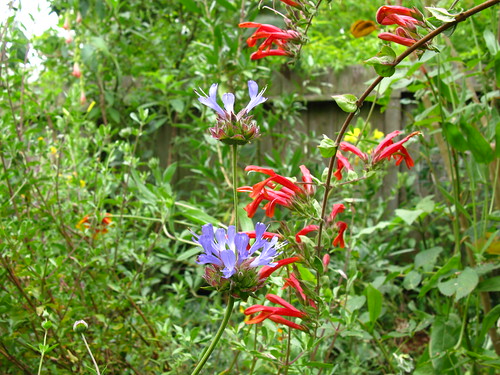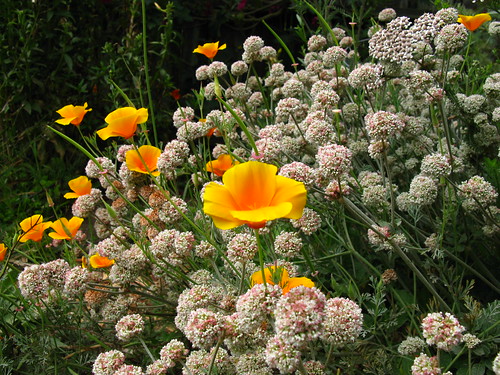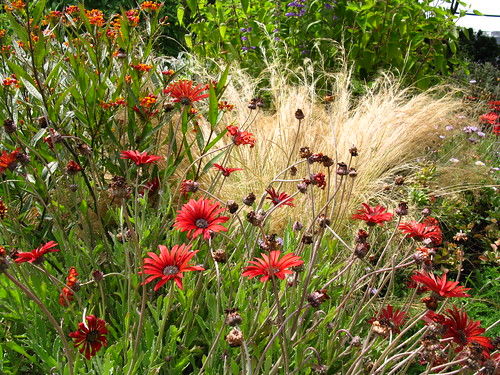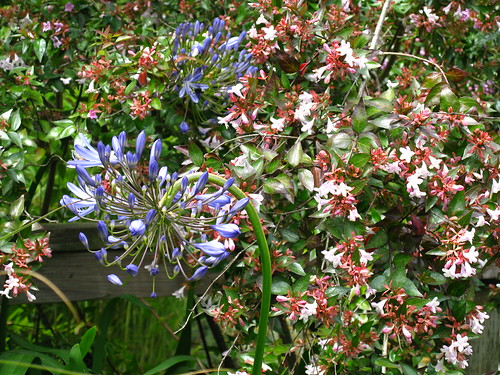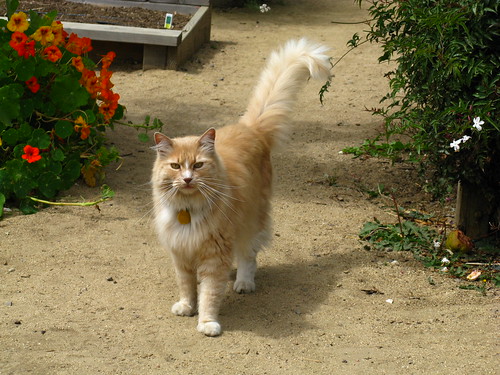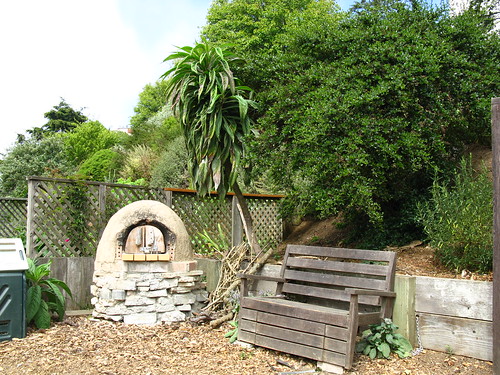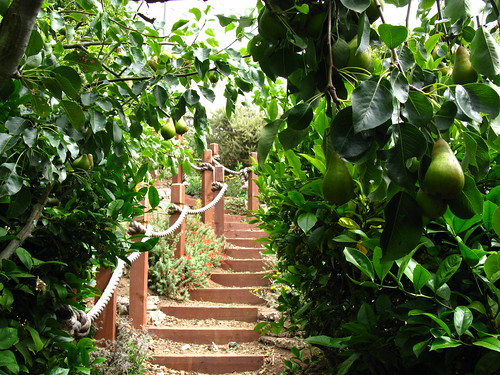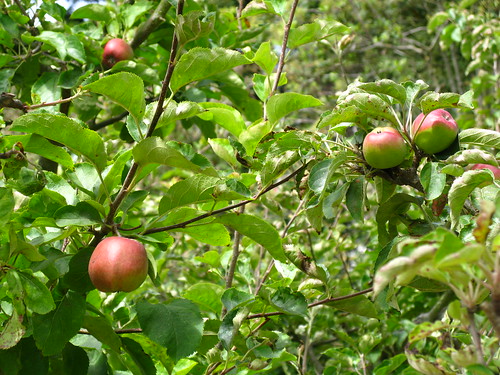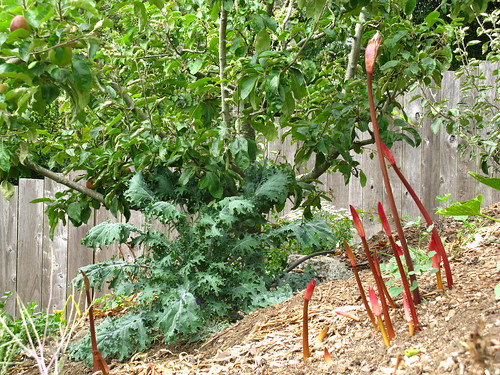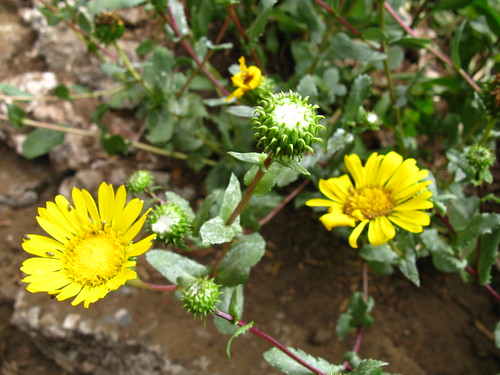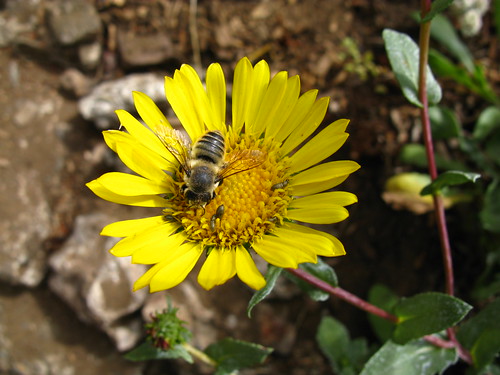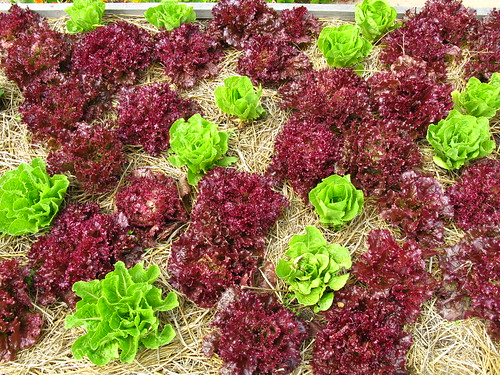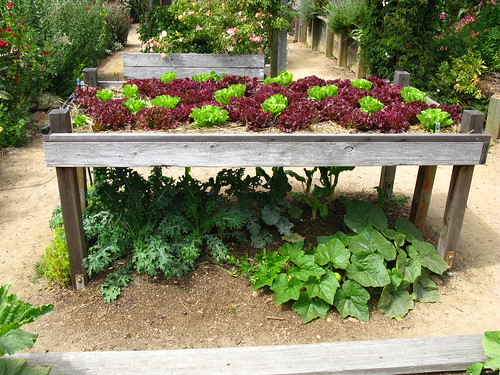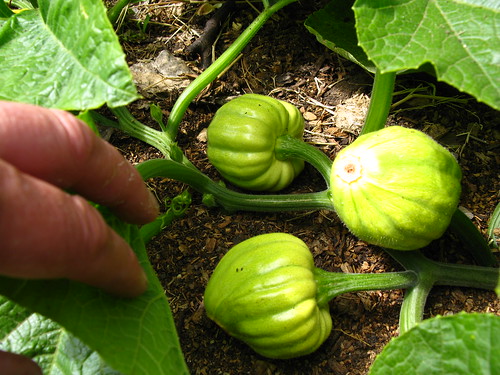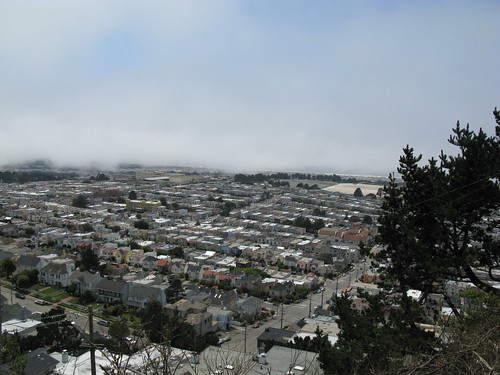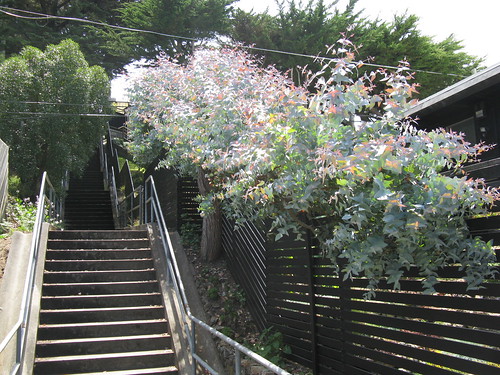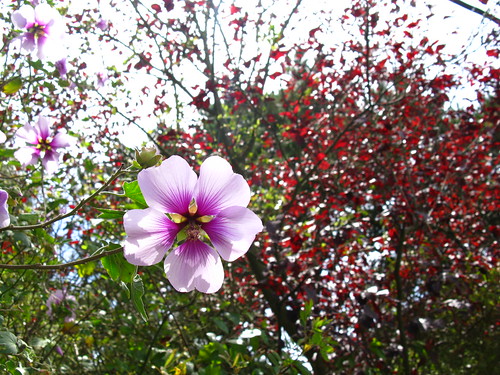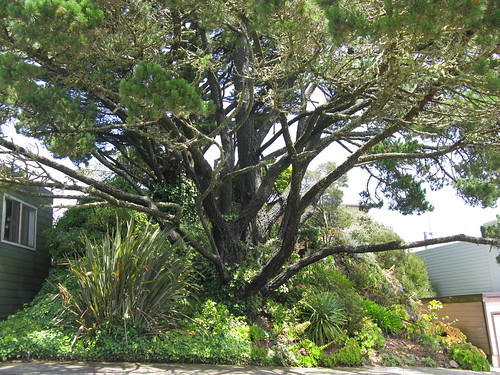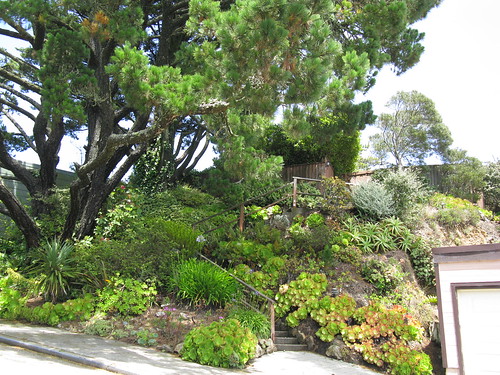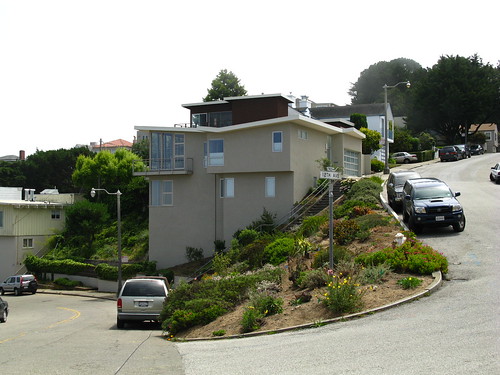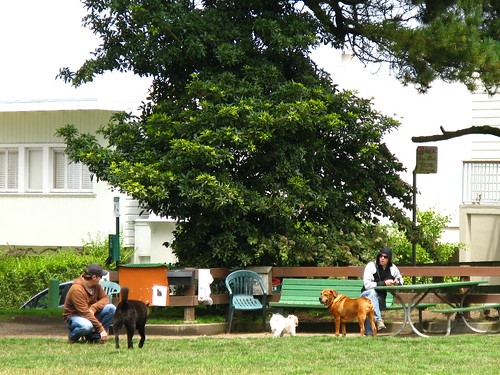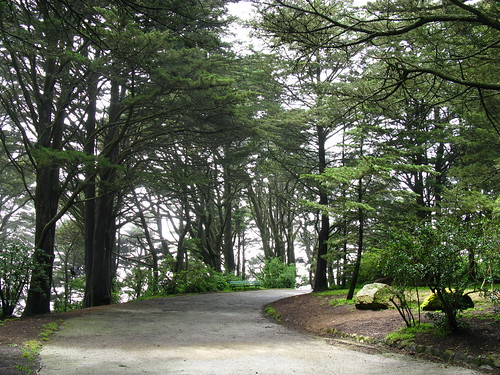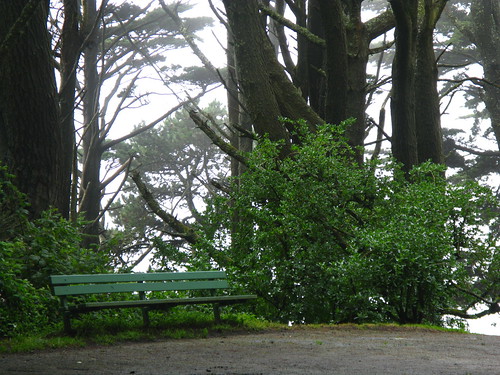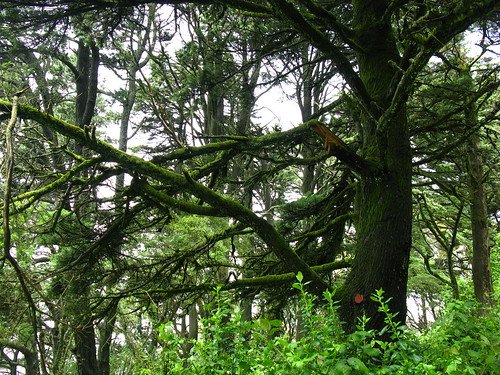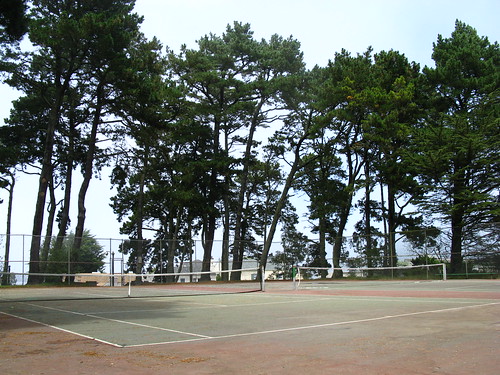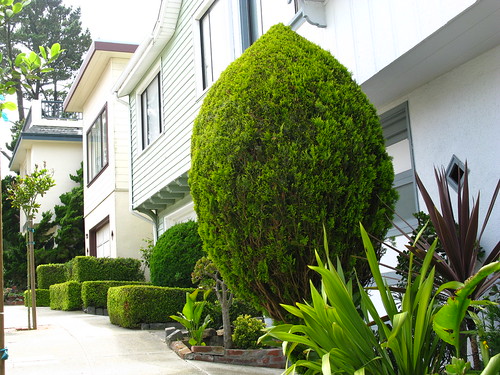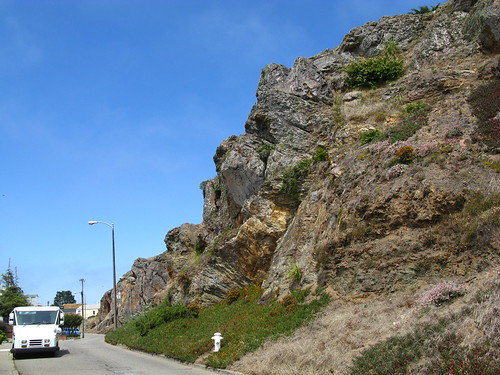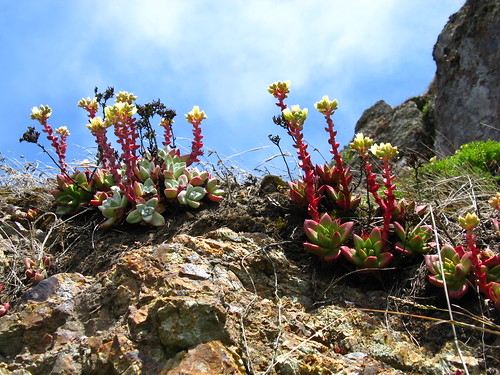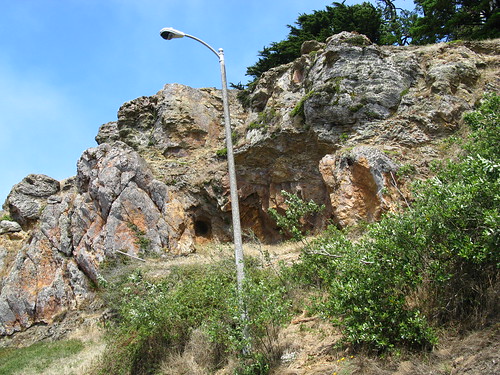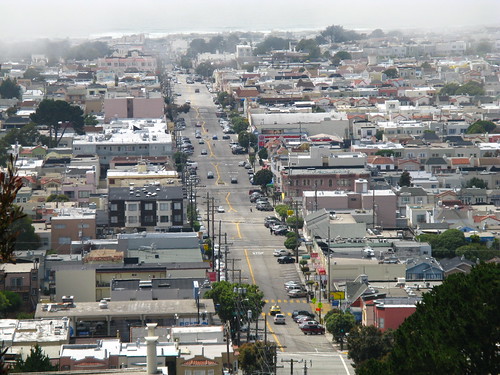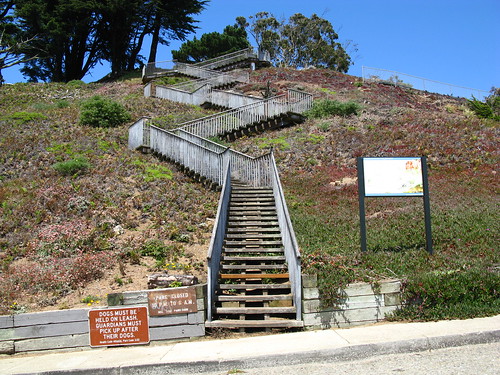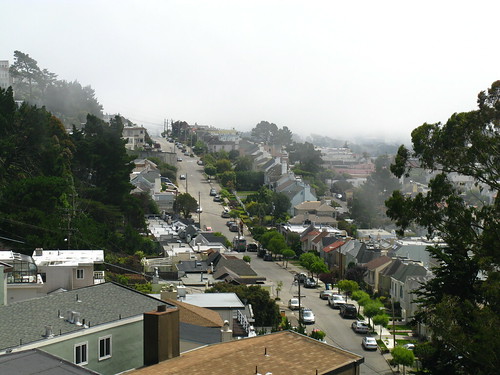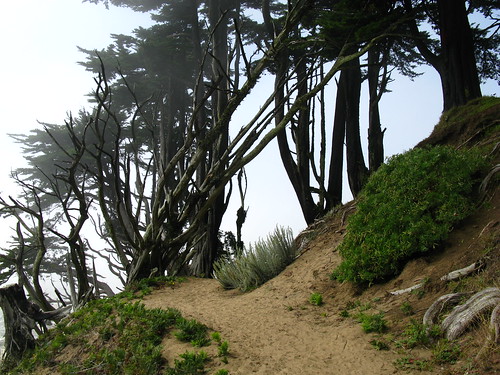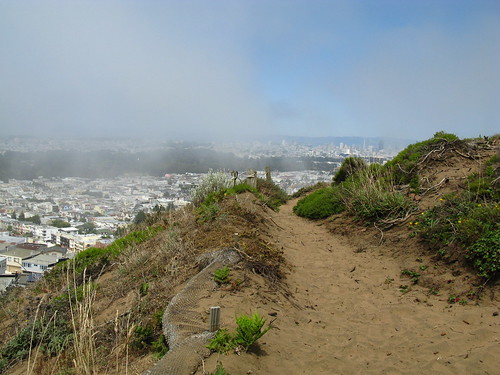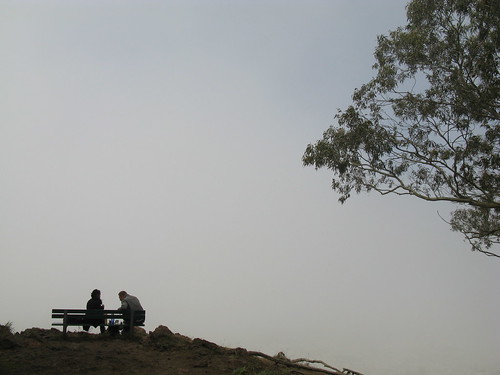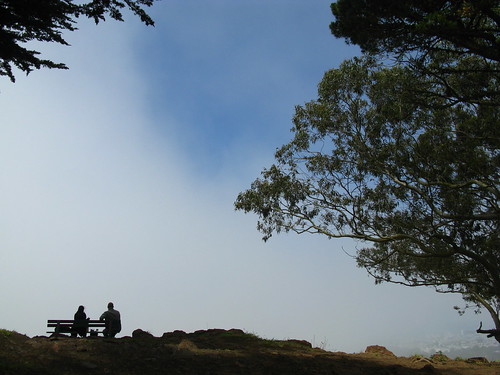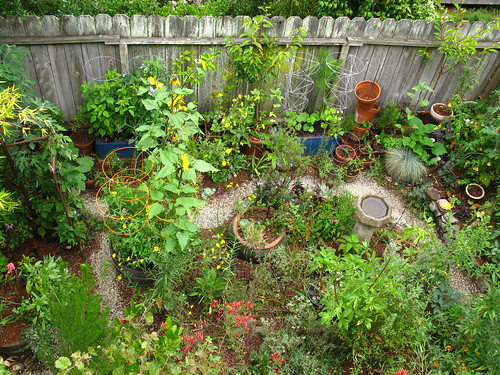
1. I'm really happy with the shape of my lemon "tree". I routinely snip off any yellow leaves and errant growth. It seems happy. It's the happiest lemon "tree" we've ever had, and we've had a few.

We had a lemon tree on our front steps for awhile--a very short while. Did you know Citrus hates wind? We learned about that very definitively. Then I had one in a container for awhile. People say lemons grow well in containers. Well, I had a bad result.
I'm trying to find something nice to plant under it. Right now I have some Graptopetalum. Maybe add some black mondo grass?
2. I don't think Nigella makes a good "filler"; the texture is so frizzy it just looks like a mess.
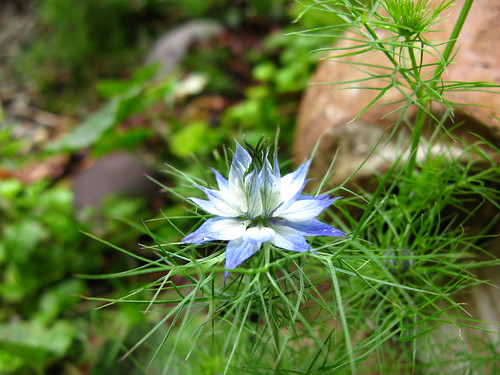
3. You should think about what you plant under Cobaea scandens because the flowers drop a little bit of nectar when they open. Lots of flowers = lots of nectar. That might not sound so bad, but the sticky nectar collects dust that stains plant leaves.

Occasionally some nectar will drop on me when I'm working under the vine. Once it landed on my arm and I licked it off. It was very sweet.
Another thing about the purple-flowering form: strong sunlight will bleach the corolla. That's what's going on in this picture a little bit.
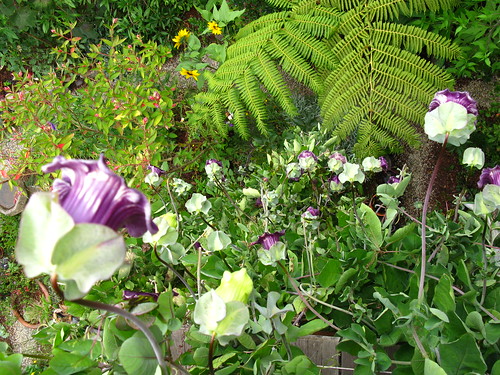
4. I recently put Geranium maderense back in the garden. It's a fun plant to have once in awhile, but you don't need it all the time. The painted strawberry pot was here but as focal points go, it mostly failed so I changed it out for G. maderense.
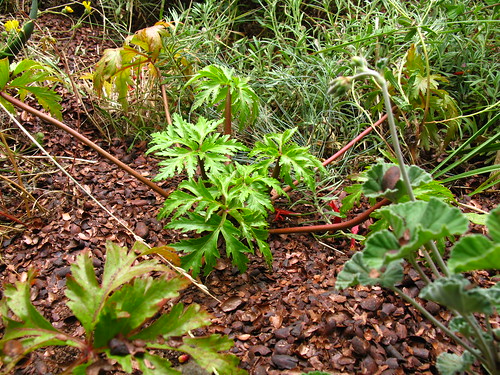
5. I decided that I don't like Dahlia 'Prince Noir' anymore--too dark a flower, too blah the foliage. I yanked it out. (Actually, I only pulled off the stems; the tuber is still in the ground.) Now I have a much better view of Beschorneria rigida, and that's a good thing.
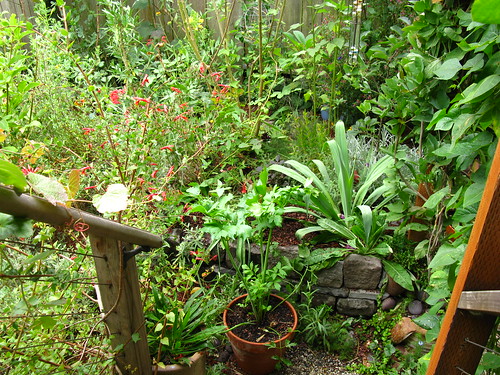
6. I'm also disinviting Digitalis ferruginea to my garden. It's a fine plant, it just doesn't work in my garden. Next year I'm going back to purpurea. Say bye-bye.
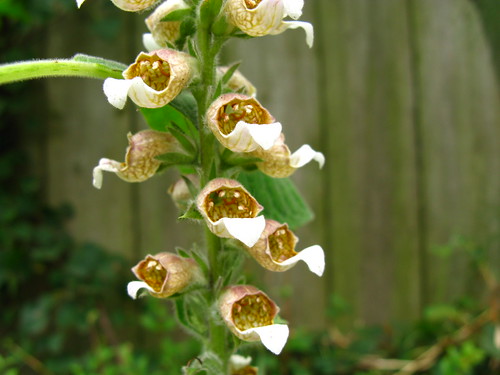
7. I want to always have Cerinthe major. It self-sows heavily so it's likely I always will have it. However the self-sown seeds don't germinate until the fall rains, so I either have to start collecting them in the spring or plan to water my own seedlings, or buy a couple plants in the summer (which I just did) and water those. Welcome back!
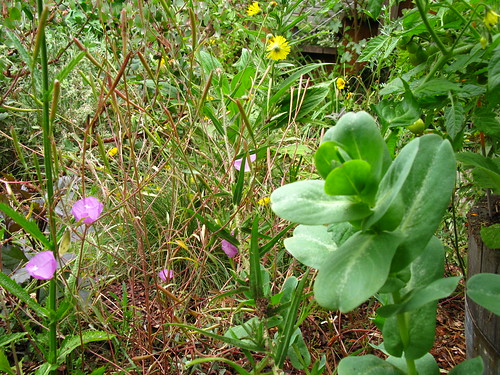
8. Here is something new and exciting! A black Ceanothus from Ireland named 'Tuxedo'. You can get them in 4" pots at Annie's Annuals now. And it blooms in the summer!
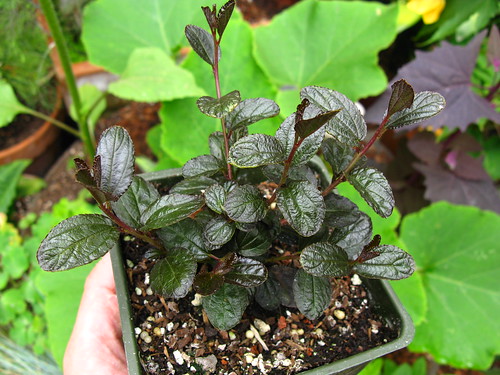
Note: Ceanothus is primarily a Californian genus, but the Europeans have bred many hybrids. I can't think of another dark-colored Calif. native, besides some Arctostaphylos pajaroensis which are not really that dark.
9. New bronze fennel takes a long time to really do anything. I guess first-year fennels mostly just make the root bulb..?
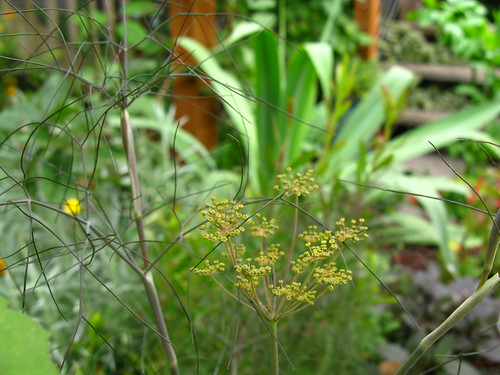
10. Another lousy year for tomatoes in San Francisco. Although I don't want to speak too soon. We still have a 3 months of summer.
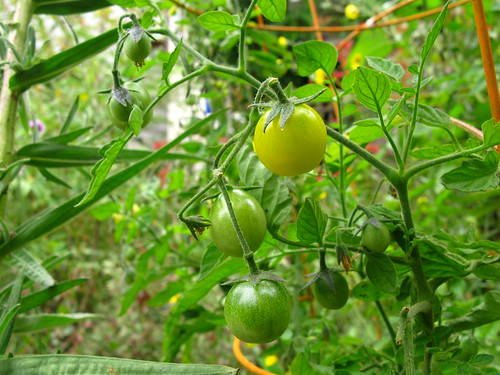
11. I ripped out all the sweet peas but this one, which has no mold. The others were disgusting.
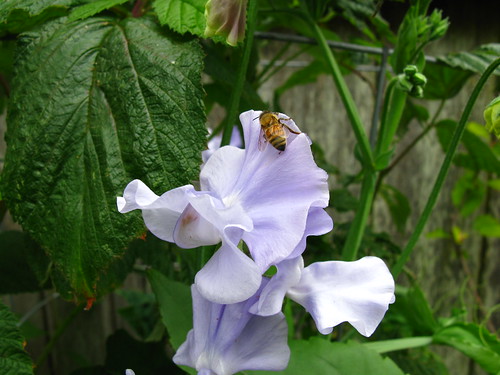
12. I should probably put some bird netting over the raspberries soon.

13. I cut away all the low-growing foliage of Arctostaphylos pajaroensis 'Lester Rowntree' to reveal the wood which seems to be this plant's best feature in the summertime. The foliage is lovely in winter and spring, but by summer the dark green leaves were creating a blind spot in the garden. (I poked sticks around the area to discourage midnight fecal donations.)
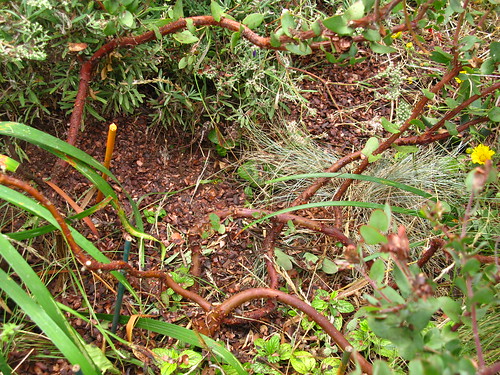
I'm thinking 'Lester Rowntree' is not the best A. pajaroensis for foliage. (Besty Clebsch endorses 'John Dourley' as having the showiest fruit.)
14. Fuchsia boliviana fruit makes a tasty treat.
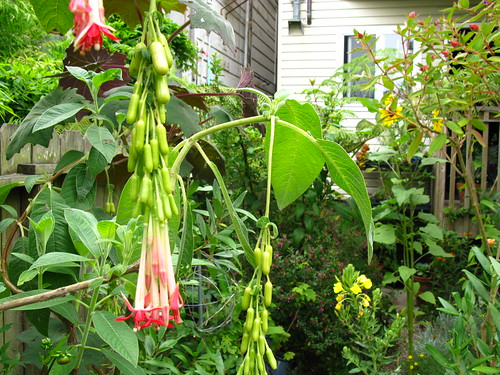
15. I bought two kinds of sunflower seed (from Seed Savers and someone else, I can't remember who): Italian White, and Claret. All the sunflowers have come up a generic yellow.
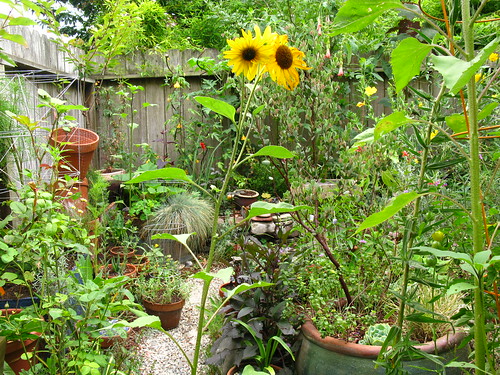
16. Salvia clevelandii flowers make me happy.
